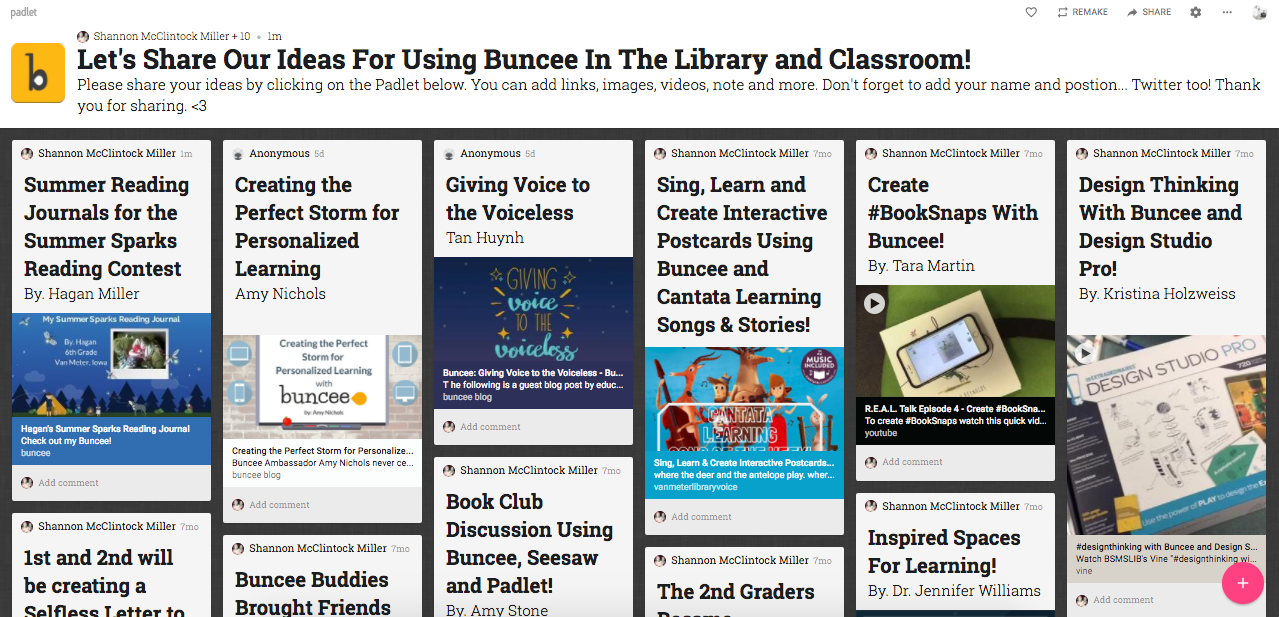

You can also choose how they will demonstrate their learning: via a link to their Padlet, a screenshot of their Padlet board, or a written reflection on how Padlet has contributed to collaboration with their peers or among their students.At CCCU, Padlet was first introduced to colleagues through our ’ 12 TELs of Christmas’ event that ran throughout December 2016.
#Padlet ideas how to#
Some of our districts have incorporated Padlet into reflection activities, digital citizenship lessons and more - using Padlet collaboration for their own specific initiatives.Īctivity customization isn't limited to changing the steps teachers need to take to learn how to use the tool. If you don't find an activity that works for you in our catalog, you can easily create one of your own.
#Padlet ideas professional#
Our platform offers you a way to customize professional development and learning activities that are specific to your district's needs. Our catalog features many Padlet-focused activities from our districrts that teach educators how to get started and use the tool in their classrooms. Rather than hosting a Padlet workshop, our districts are leveraging Alludo to teach educators how to use Padlet - at their own pace, and in a way that suits their specific classroom needs.

We believe that one of the best ways to learn is through active participation - that's why our platform offers districts the opportunity to create (and evaluate!) experiential learning activities for teachers.įinding the time to introduce educators to new tools can be difficult with conflicting schedules and available professional development hours and budgets. The Padlet Backpack for schools plan includes features like: student reports, extra security, personalized branding, LMS integration, data analytics and content filtering. Create a scenario, and ask your students what happens next - let them take turns one-by-one or in groups to write their own adventure. Storytelling: Start a story and let students take from there. They can add documents, links and drawings to envision their perfect learning environment. Surveys & ideas: Pose a question on how to improve your classroom, and let your students respond on Padlet. Worldwide collaboration: Create public Padlet walls and share the links with a partner school across the country (or even the world!) to bring new perspectives to your students. Notetaking: Students can use Padlet to take notes, or post questions during a lecture. Studying current events: Keep students informed by posting recent news articles relevant to their learning. Informal assessments: Post a question about today's lesson, then review student responses for comprehension.

Let's take a look at some of the ways educators are currently using Padlet in their classrooms: It's 'the easiest way to create and collaborate in the world!'Ĭheck out the Alludo Demo PADLET IN THE CLASSROOMīringing Padlet to your district will not only encourage collaboration among educators, but will also open up a world of opportunities for students to share their learning. Padlets can be public or private, and users can invite collaborators to brainstorm and work together (read: collaborate). Padlet content creators use the site in a variety of different ways: as a portfolio, a blog, a website, or an idea board. The site encourages users to get creative, with customizable layouts, drag-and-drop features and beautiful backgrounds. But Padlet is much more than an online bulletin board. Padlet is an online application that makes it easy for students and educators to collaborate on just about anything (and any topic)! Users create flexible boards, where they can post ideas, documents, files, photos, websites and drawings. But what about collaborating when you can't meet face-to-face? That's when Padlet can come in handy. "In schools characterized by high relational trust, educators were more likely to experiment with new practices," and "were also more likely to demonstrate marked gains in student learning."Ĭollaboration takes many different forms, from staff meetings to informal hallway conversations, intentional sharing sessions to department meetings. They studied how teachers, administrators and parents worked together to transform their schools. In a three-year study conducted by the UChicago Consortium, researchers found that social relationships within the school community had a significant impact on learning outcomes. Is this intense focus on collaboration just edu-jargon? The research says no. Project-based learning, collaborative classroom environments, and collaborative tech tools are becoming increasingly popular. Teachers are encouraged to collaborate with one another, and foster collaboration among their students. Collaboration has become a serious buzzword in education over the past few years.


 0 kommentar(er)
0 kommentar(er)
